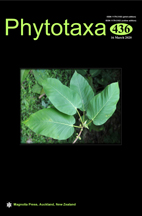Abstract
Trillium Linnaeus (1753: 339) species have a reputation for being difficult to distinguish from one another, both on morphological (e.g. Freeman 1985, Schilling et al. 2019) and initial studies with standard plastid markers (Osaloo et al. 1999). Thus, the species that is sister to the rest of the Parideae, Pseudotrillium rivale (Watson 1885: 378) Farmer (2002: 687), was only recognized to be distinctive after DNA sequence data became available (Farmer & Schilling 2002). In the somewhat similar case discussed here, an entity that was considered to be only a form or variety of one species, T. ovatum Pursh (1803: 216), has turned out to be so genetically distinct that it is not even placed in the same clade as T. ovatum (Farmer 2006, Lampley et al. unpubl.).

